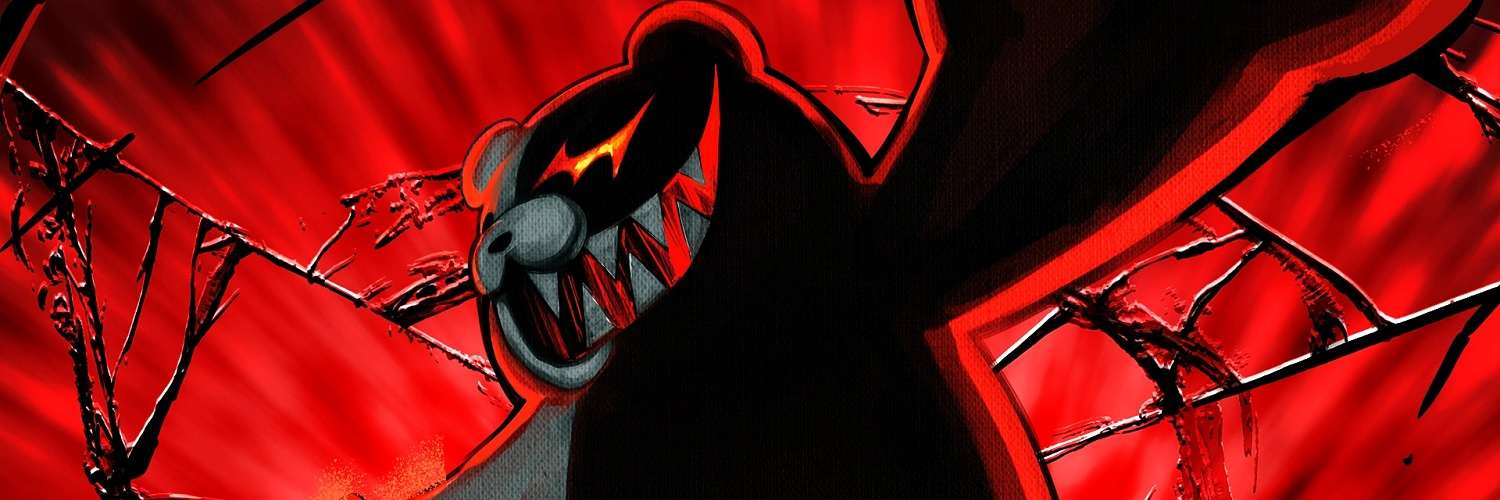
Danganronpa Decadence Switch Review
My gateway into visual novel adventure games came from my encounter with Phoenix Wright: Ace Attorney on the Nintendo DS. I already enjoyed point-and-click games, such as Broken Sword, but there was something about Ace Attorney that stuck with me. Its brilliant script, amusing characters, and great scenarios kept me engrossed from beginning to end. This led me into looking for more Japanese takes on the genre and eventually led me to Spike Chunsoft and the amazing Nine Hours, Nine Persons, Nine Doors, again on the DS. The Vita also had its fair share of visual novel adventure games, with Danganronpa: Trigger Happy Havoc, once again a Spike Chunsoft game, giving me a very similar vibe to Phoenix Wright: Ace Attorney, especially since you had to find the guilty person through a group of personalities that were out to get each other. Since then, I have loved discovering similar games and taking in what madness storytelling they want to share with me (I look at you, Steins; Gate).
There is one thing linking all the above games, which is they were all on handheld devices. I find it much easier to play these games on a handheld, so when I heard that the three mainline Danganronpa games were coming in a collection for the Nintendo Switch to celebrate the 10th Anniversary of the first game, along with an expanded take on the board game minigame that was part of Danganronpa V3: Killing Harmony, I had to jump in and relive the murder mysteries once again.
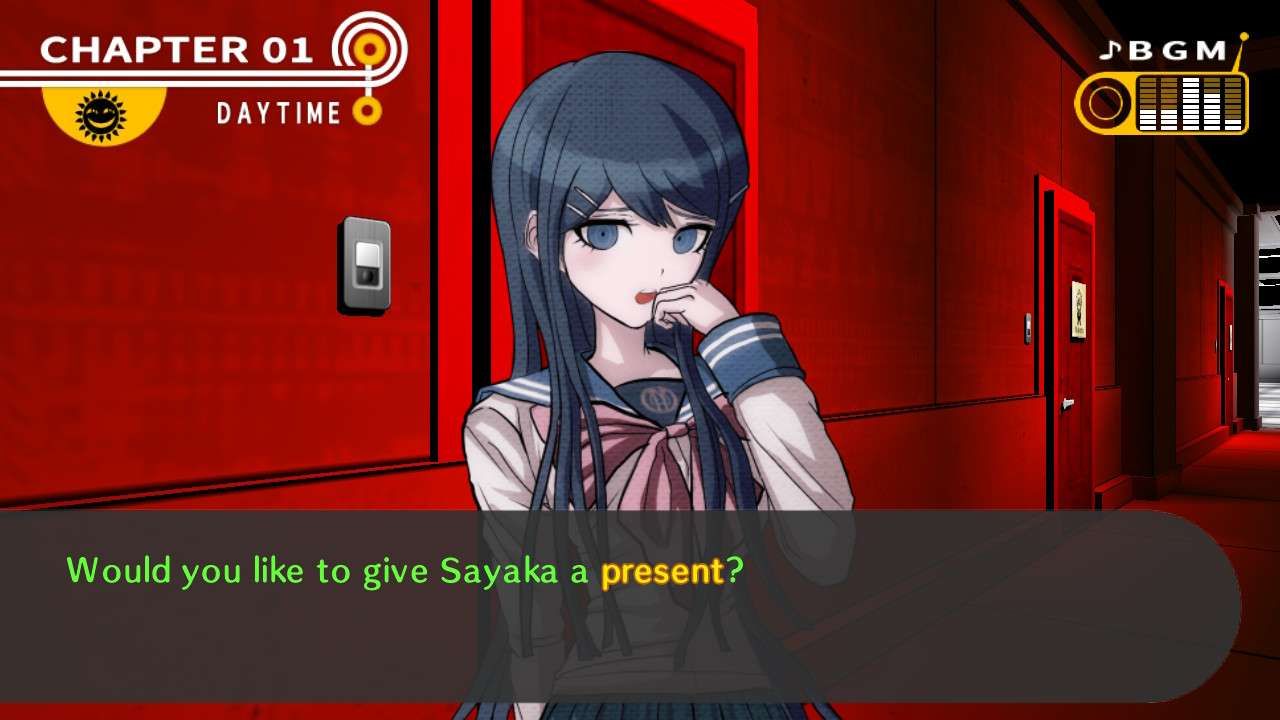
I will briefly talk about the three games in the collection that have already been released on previous platforms. If you would like to see more of an in-depth look at Danganronpa: Trigger Happy Havoc or Danganronpa 2: Goodbye Despair then you can check out the reviews for them on the site. I feel that for existing fans, this collection is more about the expanded, stand-alone RPG board game that the developers have fleshed out and put into this collection – this can also be bought separately on the Nintendo eShop for anyone who does not want to purchase all three games again. For newcomers who are going in fresh into these games, then it is probably best to not spoil, as these games are heavily focused on the story and the twists and turns throughout each game and the overarching plot that joins them all together.
The general idea behind the three games is that a group of young prodigies end up together within a location against their will and are kept away from the outside world. I guess it is a bit like Big Brother, but with death and despair, although you could argue the latter emotion being a dominant emotion from watching Big Brother. These students are the ultimate in their field, for example, in the first game, there is a person who is the Ultimate Gambler and another who is the Ultimate Programmer. The beginning of each game is the same, the group tries to understand what is going on. It is not until the mascot of the series, Monokuma, the black and white bear with an evil glint in his eye, tells the group that they are locked away from the outside world and the only way to leave is if they kill one of their fellow students and escape without getting discovered as the “Blackened”, the murderer, by the rest of the people living with them. To make matters worse, and to make sure the other prodigies care about this, if the blackened is incorrectly selected, then the rest of the gang are killed while the blackened goes free. Not only that, Monokuma knows that the students will try to work together, so every time he becomes bored with the peace, he throws in a curveball to inspire a motive for people to kill, which triggers a murder and a roller coaster ride of mystery in each of the games.
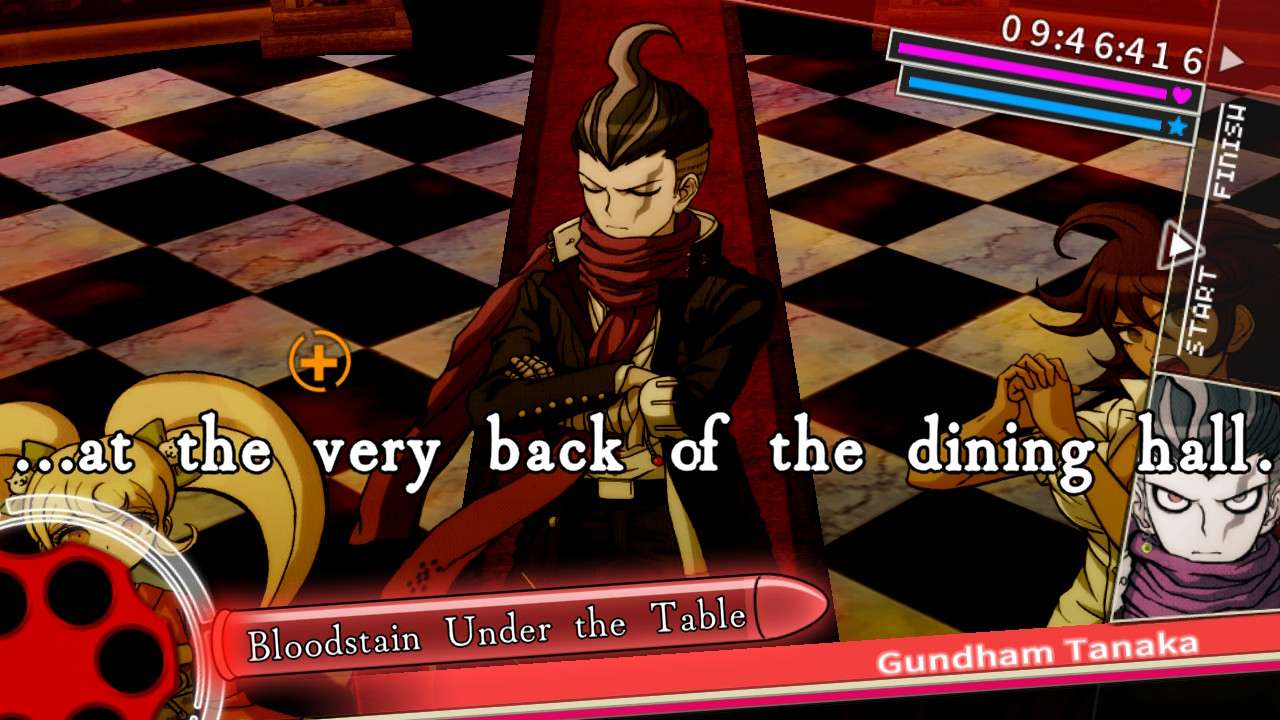
When a murder is committed it is time to investigate the evidence to build up a portfolio, bullet truths as the game likes to call them, as this is then used for the courtroom battles between the ultimate students. One thing I have always enjoyed with the Danganronpa series is that it makes the courtroom battles more of a video game than Ace Attorney. There are mini-games where you have to aim and shoot the truth bullet at the glowing text that is shouted on screen by the students to activate the objection. There are also other mini-games, such as letter reveals, paragraph reveals done through snowboarding/taxi driving, and even a picture puzzle element. These are simple implementations, but it spices up gameplay from the standard flaw and submission evidence gameplay, which gives Danganronpa a difference from Ace Attorney.
As with the Ace Attorney series, Danganronpa is all about the personalities and interactions with the over the top characters and the captivating murder mystery stories. There are some outrageous twists and inventive murders to witness here, almost horror-like in their delivery. These are adventure games wrapped up as visual novels, so there are times where a lot of reading is required between the exploration and courtroom showdowns. The presentation around these games is fantastic, stylised in strong, bright colours and great artwork. The soundtracks manage to capture the quirkiness of the whole situation, the light-hearted moods and the dreaded despair when things get tense. These are the reasons why the games have become cult hits among Vita fans, then the ports that happened on PS4/PC.
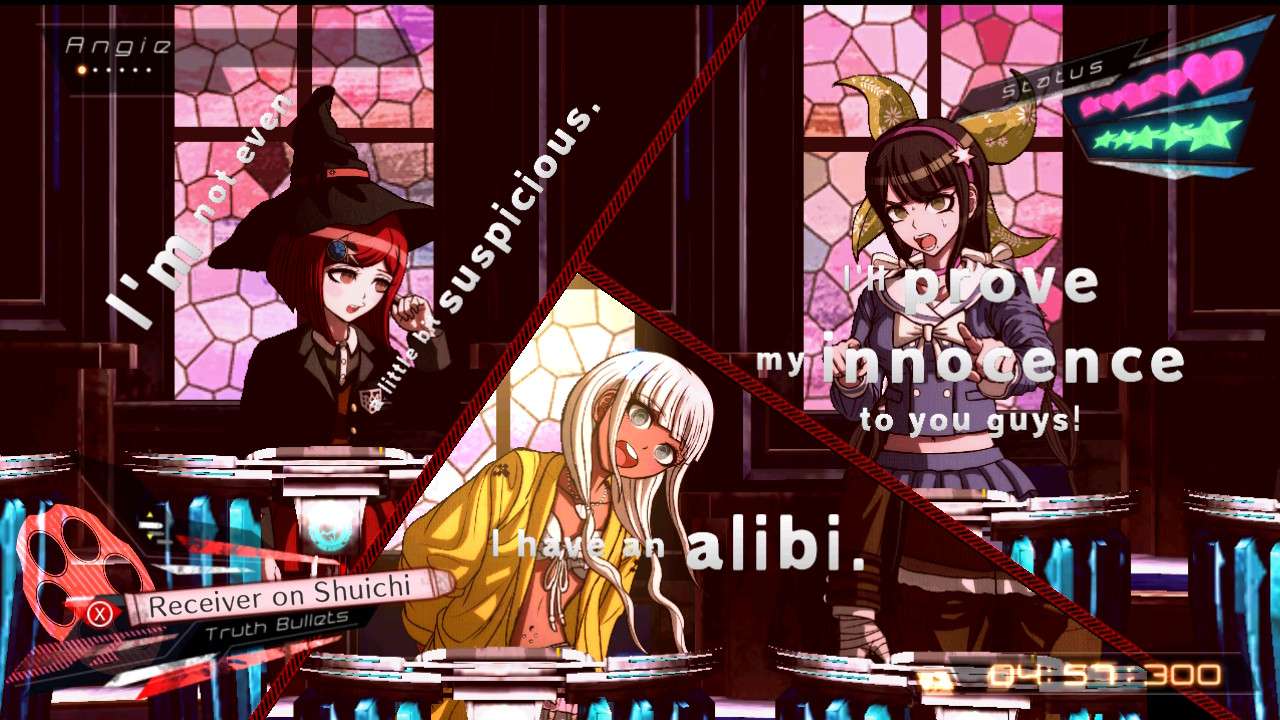
On the topic of ports, these three games seem to be based on the mobile version rather than the Vita version. There are small visual differences between this and the Vita release, such as missing foliage and details in the 3D modeled backgrounds. Also, these games were ported with Unity, and with that comes some disappointing performance issues on the Switch. The first game seems to manage to get through without issues, but there are some tiny frame rate hiccups on the second game. Things become a bigger problem when we get to V3, because the last court case in that game is hit with some serious lag, which is so impactful that it causes the voiceovers to crackle and the interactions to judder. I have no idea how they thought this was acceptable because this scene goes on for a few minutes. Due to this, what should have been the perfect collection of the three Danganronpa games, sadly is not, and while I still recommend getting this collection if you have never played any games, it should be warned that performance is not perfect for V3, true despair on what should have been the ultimate collection.
Danganronpa S: Ultimate Summer Camp is the new addition in this collection, a revamp of the minigame that was added in V3 as something to play when the story was completed. Danganronpa S: Ultimate Summer Camp is completely different from the others. This is a mixture of a board game, where players roll dice to move a character around, and an RPG battler that features in parts of the board game, but also has its own section to try to go through as many battle floors as possible in the dungeon tower. The general plot is Monokuma wants to make the summer trip fun, so decides to unleash his Monokuma monsters, each one a boss blocking a bridge to the next section of the board.
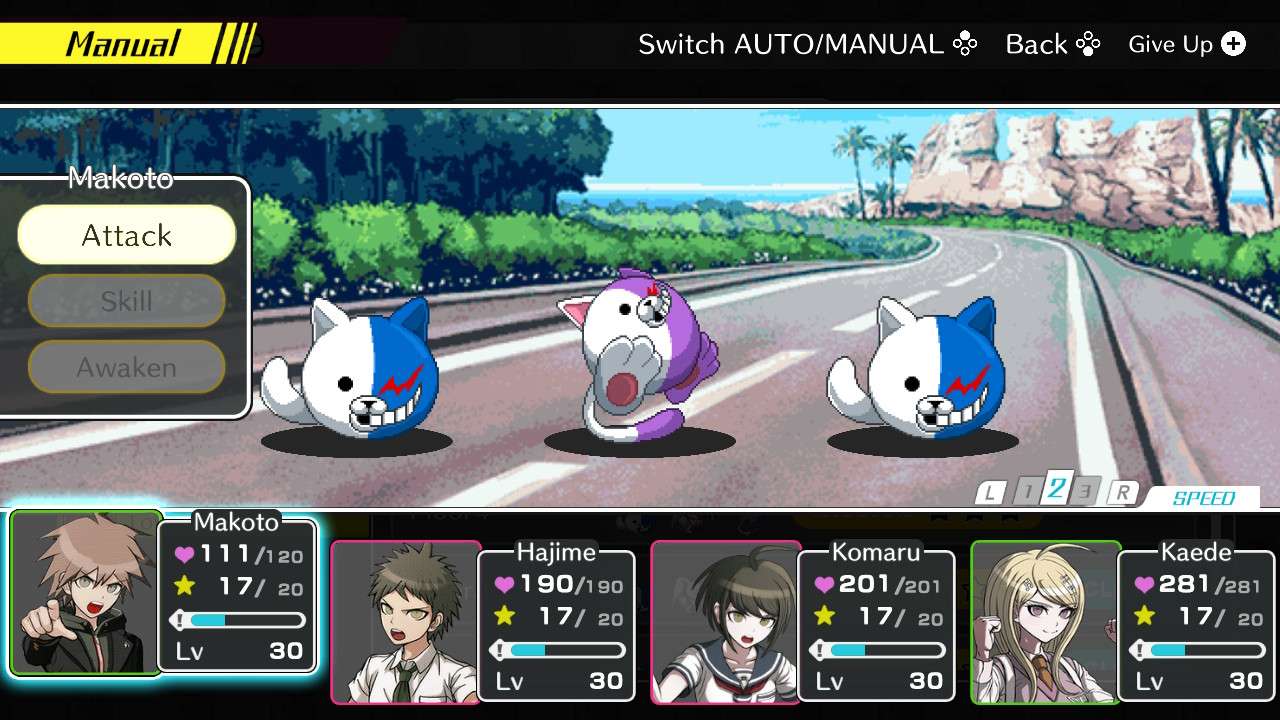
In gameplay terms, the is straightforward, roll a dice and move the spaces, and then whatever space landed on, do what it says. These can be turn-based battles, bonus experience, money, character interactions, shops to spend the coins earned from battle to buy new equipment. It is a typical digital board game given a coat of Danganronpa paint, but it is only for one player. There is also a lot of grind with this game, due to how it mixes in the separate dungeon mode and this board game mode. The idea is that you train characters in the board game, then once the 52 turns are over or the board is finished this character is saved and then can be added to a party of four to attempt to clear each floor in the dungeon tower. Once a floor is completed, it saves, so there is no handicap for trying to push through a hard floor and failing.
The problem is that there is gacha elements to this game, something often related to free-to-play games as a way to randomly get new things in exchange for either in-game currency or paid currency. Coins from the dungeon mode and the board game, along with achievements unlocked, are used to gain more characters, cards, buffs, and features for them, eventually gaining the higher rank unlocks that enable the character to level up faster and have better stats. I would be okay with all of these being free, which can be gained with heavy grinding, but there are microtransaction options here that allow you to purchase higher rank variations and cards if you do not want to go through the grind. This game is part of the bundle and is probably worth its admission because of the value of the other three games. What I am saying is that I do not feel too bad about it in this collection, but on its own, Danganronpa S: Ultimate Summer Camp sits at £17.99 and it feels dirty for having these microtransactions included at that price.
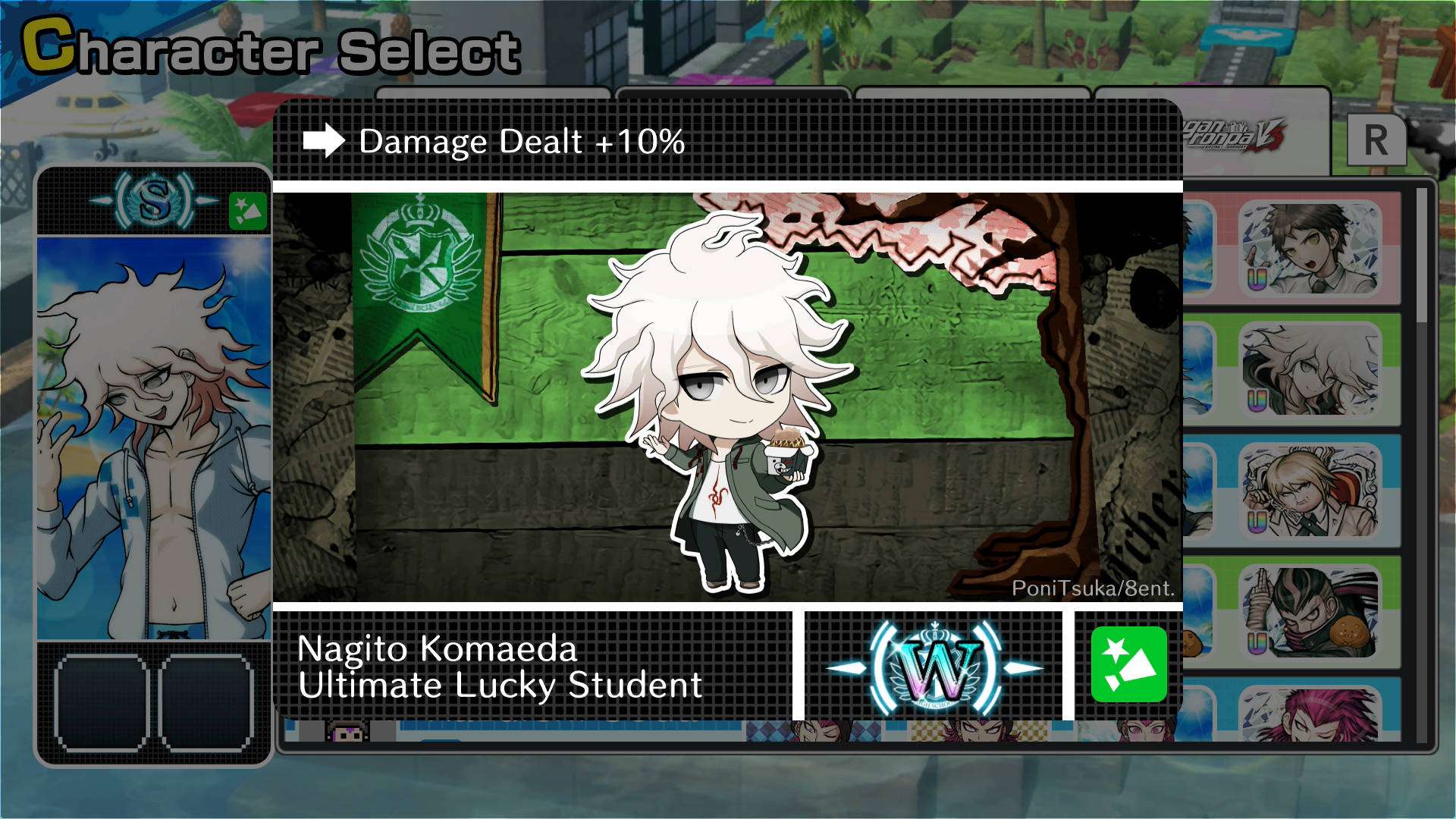
The idea for Danganronpa S: Ultimate Summer Camp is to get all the characters from each game together, interacting through thousands of scenes that are unlocked during the board game. This is why I feel this is aimed for truly the hardcore fans who want to see every dialogue these characters have because they have come to adore them over the years through the main games. There is no real seriousness to these scenes, just a sort of “this is the madness that occurs when the students are on a school trip together.” Overall, it is rather an average virtual board game given some character due to the Danganronpa coating, a pass time to play on the Switch when you want to do something that does not require thought. If this was on its own, it would score low, but thankfully, the rest of the package has the other three superb titles that make it worth it.
As a complete package, Danganronpa Decadence is a brilliant collection of three very well-produced adventure visual novels. It is a shame about V3‘s performance in the last case, but overall, these are some highly recommended stories. Expect to fall in love with the characters, be shocked at the many great surprises, and be gripped by suspense over what is around 100+ hours of gaming. If you are fans of visual novel adventures and have not checked this series out yet, then you seriously need to pick up Danganronpa Decadence. The package is not spoiled by the inclusion of Danganronpa S: Ultimate Summer Camp, because the asking price is easily worth it for the other three titles, so Danganronpa S: Ultimate Summer Camp feels more of a freebie thrown in. In all, this is a worthy collection for anyone who loves an engrossing murder mystery and has a Switch ready to play them at home or on the go.
